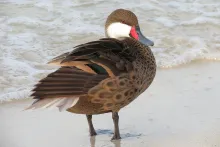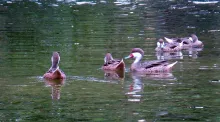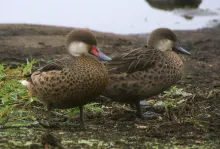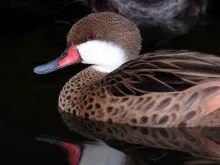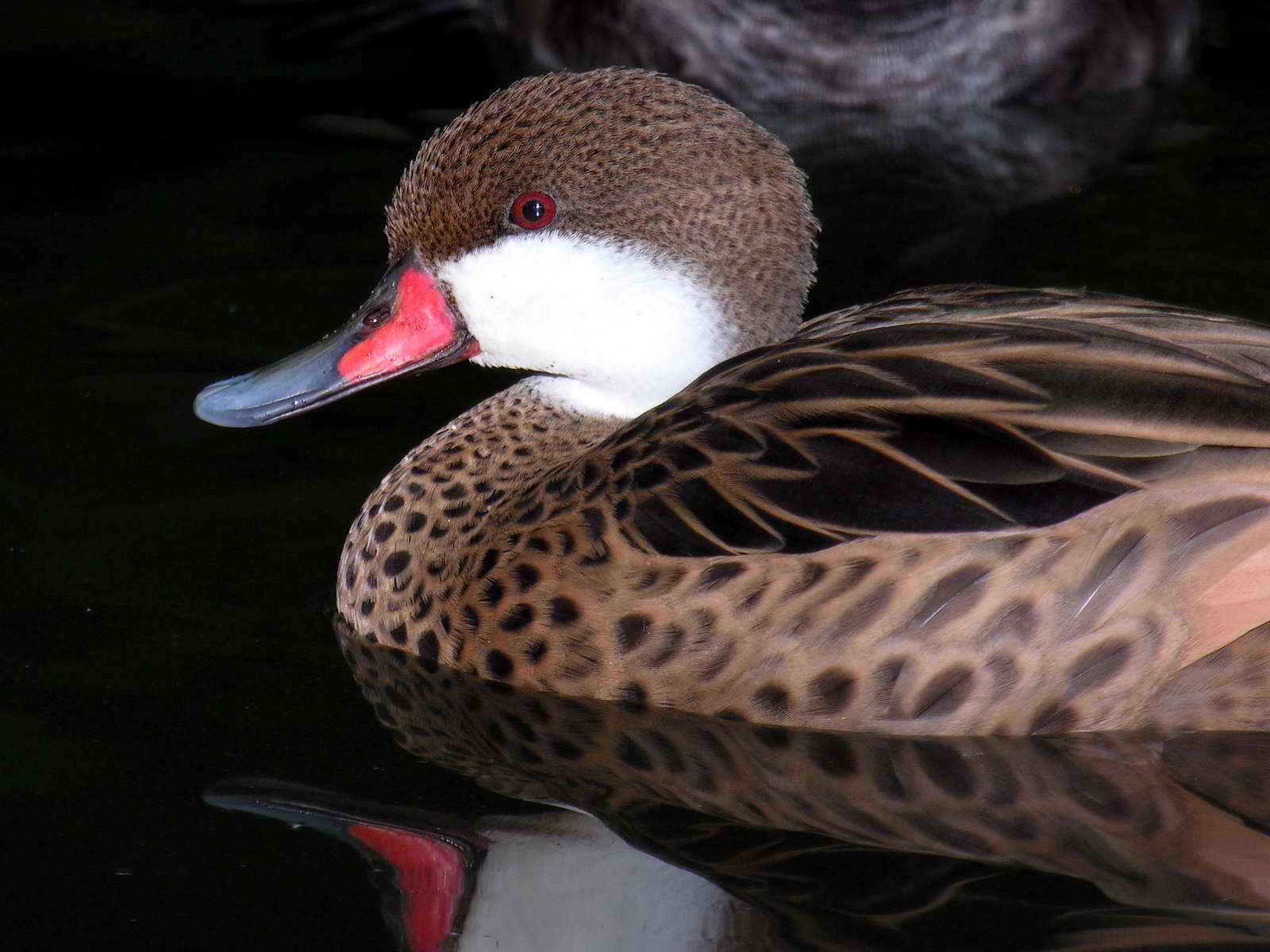
Bahama Pintail (Anas bahamensis)
Species name
- Dutch name:
- Bahamapijlstaart
- English name:
- Bahama Pintail
- German name:
- Bahamaente
- French name:
- Cannard des Bahamas
- Scientific name:
- Anas bahamensis
Scientific classification
- Order:
- Anseriformes
- Family:
- Anatidae
- Onderfamilie:
- Anatinae
- Genus:
- Anas
Description
- Description:
Common in collections, mainly Anas bahamensis bahamensis.
Male:
The male has brown upperparts with black feathers bordered with pale buff on back. Tail is pointed and yellowish. Wing coverts are brown. Great coverts have yellowish tips. Tertials are blackish with pale brown edges. Secondary bases show metallic green band and black sub terminal band with broad yellowish edge on the tip. Underparts are warm brown, spotted with black on breast and belly. Undertail coverts are yellowish. Underwing is dark, except paler central band, blackish flight feathers and pale trailing edge. Crown and nape are brown, slightly spotted with dark. Sides of the head, throat and upper neck are pure white. Bill is blue-grey with red sides at base of upper mandible, and black nail. Eyes are brown. Legs and webbed feet are dark greyFemale:
The female is white of face and bill coloration a little duller than the male, and is also a little smaller, with a shorter tail.Juvenile:
Juveniles resembles adults, but with slightly duller bill and plumage.
Standard Measurements
- Body Length (cm):
- The male (drake) of the Bahama Pintail measures approximately 38-51 centimeters. The female measures approximately 38-51 centimeters.
- Body Weight (grams):
- The male will weight about 480-520 gram. The female will weight about 480-520 gram.
The weight is notoriously variable and can only be used as indication!
- Subspecies:
There are three subspecies:
- A. b. bahamensis—lesser Bahama pintail - in the Caribbean, and a vagrant to southern Florida
- A. b. rubirostris—greater Bahama pintail - in South America; it may be partly migratory, breeding in Argentina.
- A. b. galapagensis—Galapagos pintail - lives at the Galapagos-eiland Fernandina (Narborough).
- Note:
White-cheeked pintail (Bahama pintail) are winter-hardy, but shelter should be provided if the water is totally frozen. Non-aggressive, easy to keep and breed, these ducks may be kept in mixed collections.
These ducks will use ground-level nest boxes or nest on the ground under vegetation, preferring secluded areas such as under thick bushes or in hollows at the base of trees. Laying usually from May, sometimes April. They are reliable for parent incubation and rearing, but will lay a second clutch if the first is removed. They may desert their eggs if frequently disturbed.
Hybridisation not common.
- Breeding:
- The female Bahama Pintail usually lays from 8-12 creamy white eggs and incubates them for 25-26 days.
- Artificial incubating:
The ideal relative humidity for incubating most waterfowl eggs is 55% (ground nesters) and 40% (cavity nesters). The temperature is usually 37.4°C. Set ventilation as recommended by the incubator manufacturer. Eggs must be turned, either automatically or by hand, a minimum of 4 times a day. As the duckling develops there is a loss of water from the egg and the air sac gets bigger. In normal development of an egg with a 25-26 days incubation, the air sac occupies about a third of it three days earlier. Cleanliness is vital and ideally eggs should be moved to a separate hatcher at this point, where the humidity should be increased to 65% and even higher once they have pipped internally.
- Bird banding:
- Recommended closed leg band ring size for the Bahama Pintail is 11 mm.The leg band ring can only be applied on a young dabbling duck at around 12-14 days old.
- It doesn't matter what leg that you band, but it's good to have a consistent system. Suggested: Left leg = Female, Right leg = Male
- Rearingfeed:
-
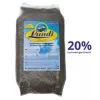
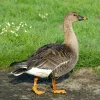

Floatable special rearing feed for all types of aquatic ornamental fowl - especially for the cultivation of trees as well as greening ducks.
This well-balanced complete feed with 20% protein content convinces above all by its good compatibility and forms the basis for visibly healthy growth from day one.
Made exclusively from wholesome and selected raw materials, Lundi Micro Regular is also ideally suited for the year-round feeding of waterfowl.
- Maintenance food:
-



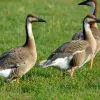

Lundi Regular with a protein content of 20%, valuable Spirulina and high-quality by-products is optimally balanced in its composition maintenance food for water ornamental fowl of all kinds. Especially green teal and Whistling ducks that are not dependent on a very high protein content, are well supplied.
Lundi Regular contains all the minerals and vitamins in full form that are important for the animals. Therefore also suitable as breeding food.


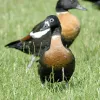


Floating full food for all sea ducks, green ducks, eider ducks and geese, especially in the moulting and breeding phase ideally suited. Packed with wholesome raw materials, natural vitamins and trace elements, this performance food with a protein content of 30% forms the basis for lifelong vitality.
